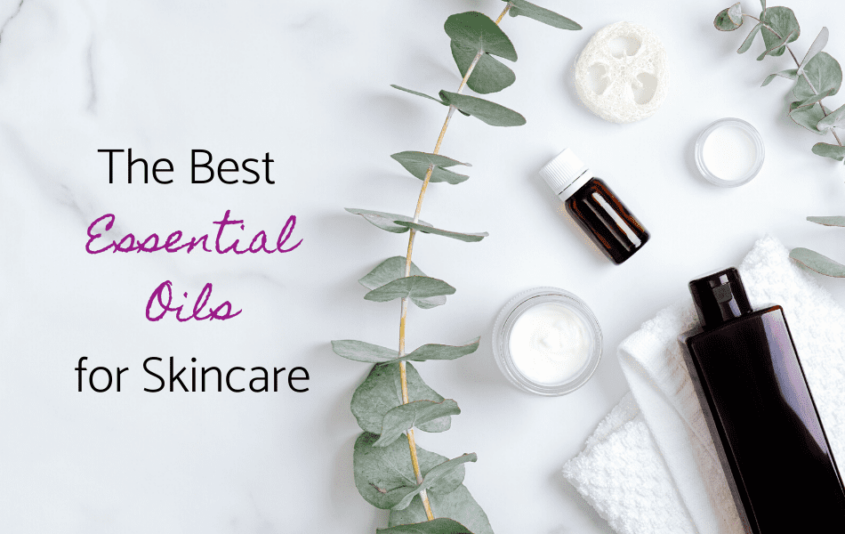Why you should add essential oils in your skincare routine
Essential oils (EOs) are highly concentrated plant extracts that are sourced from tree bark and resins, roots, leaves, stems, flowers, fruits, nuts, and seeds.
They carry with them the plant’s essence and healing properties via numerous active compounds found in just one drop of oil.
The therapeutic application of these oils is called aromatherapy.
Aromatherapy can be applied to dermatology in the treatment of certain skin conditions such as dermatitis and eczema.
If you’re currently dealing with these conditions it’s a good idea to talk to your dermatologist before using any EO topically.
Using EOs in skincare products is nothing new, though.
You’ll find that many of your favorite products contain at least some plant extracts, in one form or another.
This is especially true of natural skincare products, which are free from harmful and toxic chemicals and substances that often do more harm than good.
EOs are commonly found in skincare products because they’re effective and they work for different skin types.
Studies show that many of the active compounds in EOs can help to enhance youthfulness, fight infection, and deeply cleanse the tops layers of the skin.
Many EOs have been found beneficial for combating stress and anxiety, increasing deep, restorative sleep, balance hormones, and fighting inflammation all of which contribute to accelerated and premature aging.
The mind-skin connection is real – you wear your predominant thoughts, emotions, and moods on your face.
You also wear what you eat, ingest, and expose yourself to on your skin.
After reading this article you’ll know more about how to upgrade your own skincare routine by adding your own oils based on your individual needs.
How EOs work to improve skin
What’s the largest external organ in the human body?
Skin.
It has three main layers:
- The epidermis – This is the thinnest layer of skin and is considered part of the immune system. As such, the epidermis protects us from potentially harmful bacteria and other invaders.
- The dermis – This is the thickest layer and it contains lymphatic vessels, hair follicles, pores, sebaceous (oil-producing) glands, sweat glands, blood, connective tissue, collagen, and elastin.
- The hypodermis (subcutaneous fat) – The last layer is the protective layer that regulates skin temperature and transports blood and lymph fluid. Most of the connective tissue is also found here.
The delicate skin on your face contains hundreds of millions of skin cells and bacteria that create a synergistic dance and flow.
When there is an imbalance your skin will let you know by displaying blemishes, pimples, dry skin, uneven skin tone, rashes, etc.
EOs can be a relatively low-risk way to address such imbalances.
How certain EOs can affect your skin:
- Antiseptic qualities can help deeply cleanse your skin so you keep your glow burning brightly.
- Antibacterial qualities can help keep skin infections, rashes, and inflammation at bay.
- Anti-inflammatory properties can soothe redness, swelling, and blemishes.
- Circulation-activating effects help to increase blood flow and oxygen to your face so it can self-repair and self-regenerate.
- A high antioxidant profile helps your skin fight free radicals that are known to accelerate the aging process.
- Calming effects can not only help soothe inflamed or irritated skin, but it can also help to balance your mood and lower stress hormone levels, which contribute to skin quality and glow.
The following EOs contain all or some of these beneficial effects.
The best essential oils for dry skin
Dry skin can be the result of weather changes, underactive sebaceous glands, or even hormones.
The following EOs are known to have a nourishing effect on the skin.
You can add a few drops to your daily moisturizer or simply dilute them with a carrier oil like coconut oil or jojoba oil:
- Geranium oil
- Jasmine oil
- Sandalwood oil
The best essential oils for oily skin
Oily skin is the result of overactive sebaceous glands.
This can be the result of weather changes such as increased humidity, or hormones.
These EOs can be used regularly to reduce oil production:
- Clary sage oil
- Peppermint oil
- Grapefruit oil – has an astringent and toning effect that can be drying to the skin.
The best essential oils for sensitive skin
If you’re prone to skin irritations or reactions when topically applying any kind of beauty care, perform a patch test on your arm and wait 48 hours before applying to the face.
If there’s no reaction, then you can proceed with these gentle essential oils:
- Lavender oil
- Roman chamomile oil – avoid this one if you have a ragweed allergy.
The best essential oils for acne-prone skin
If you’re prone to blemishes and breakouts your objective should be keeping your skin clean from bacteria and excess oils.
These three oils can help:
- Tea tree oil – Is a powerful antiseptic known to help prevent bacterial infections and buildup.
- Peppermint oil
- Helichrysum oil
The best essential oils for pigmentation
Hyperpigmentation can occur as a result of sunspots, age spots, and acne scarring.
These oils can help:
- Lemon oil – This powerful citrus oil can have a clarifying effect and is chock-full of nourishing antioxidants, but beware that lemon oil can be phototoxic, which means that you may experience a reaction or pigmentation if exposed to direct sunlight. It’s best to apply all citrus oils at night and avoid sun exposure.
- Lemongrass
- Carrot seed oil
The best essential oils for wrinkles
Aging is the result of lost elasticity, wear and tear, oxidative stress, and inflammation of the skin layers and body.
Oils that contain anti-inflammatory properties can help reduce the appearance of fine lines and wrinkles by fighting free radicals:
- Frankincense oil
- Ylang-ylang oil
- Rosehip oil – contains Vitamin c and fatty acids to help keep your skin youthful and moist
Don’t forget – EOs are highly concentrated and potent!
A little goes a long way.
Always dilute with a carrier oil, lotion, or moisturizer before applying directly to your skin.
Some popular carrier oils include coconut oil, jojoba oil, and argan oil.
Only apply 1 drop of a specific oil to your face at a time.
Be mindful of phototoxic oils like lemon, grapefruit, and orange. Use them with care and caution.
If you experience an adverse reaction discontinue use immediately.
How to choose the right high-quality EOs for skincare
There are many EO brands available in the market but unfortunately, most of them are either adulterated or diluted.
You don’t want to put any impure oils on your face as they can have the opposite desired effect.
The only EOs applied to your skin should be of the best and highest quality and produced by trustworthy and reputable companies that stand by their products.
Here are 7 fool-proof steps to help you choose the right oils for your skin:
- Look for certified organic therapeutic grade essential oils.
- Check that testing has been done.
- Research the company.
- Check the label.
- Check the price.
- Check the Latin name.
- Check in with yourself.












